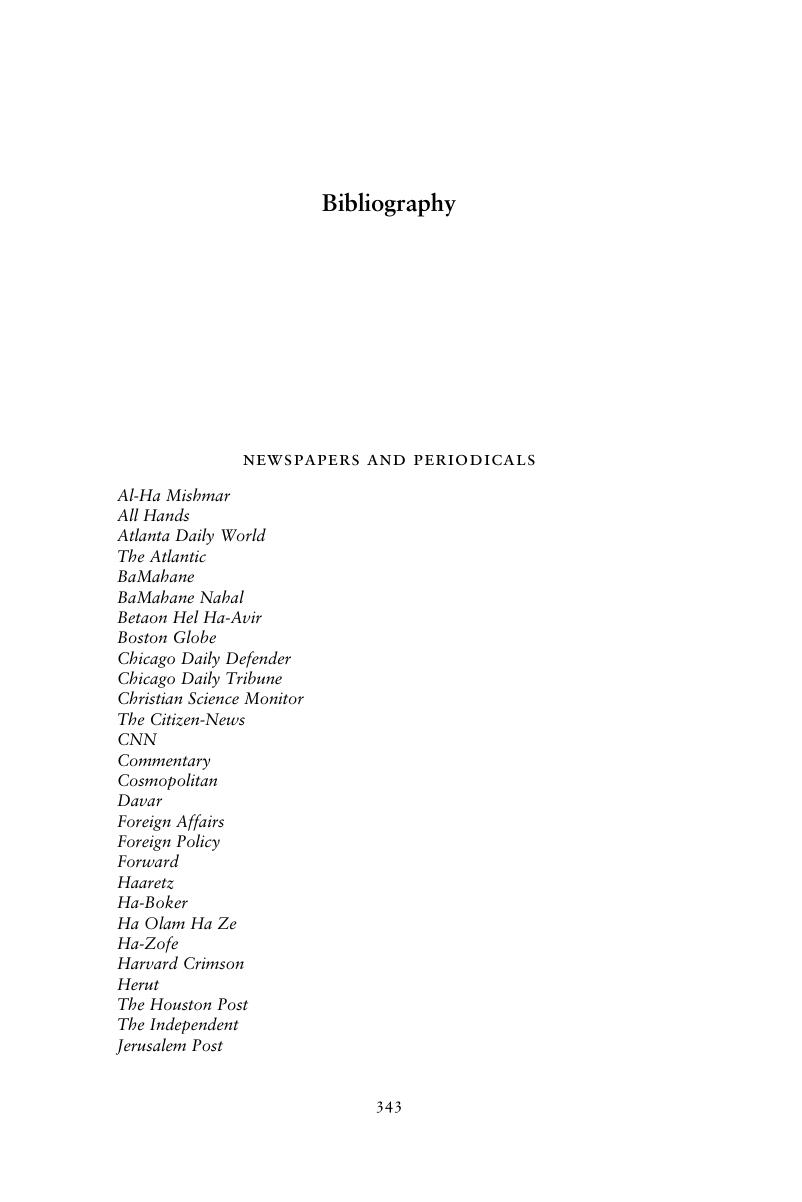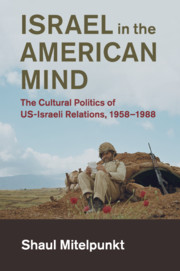Book contents
- Israel in the American Mind
- Cambridge Studies in US Foreign Relations
- Israel in the American Mind
- Copyright page
- Dedication
- Contents
- Figures
- Acknowledgments
- Abbreviations
- Introduction
- Part I The Disciple State
- Part II The Citizen-Soldier
- Part III Routines of Peace and War
- Conclusion
- Bibliography
- Index
- References
Bibliography
Published online by Cambridge University Press: 08 June 2018
- Israel in the American Mind
- Cambridge Studies in US Foreign Relations
- Israel in the American Mind
- Copyright page
- Dedication
- Contents
- Figures
- Acknowledgments
- Abbreviations
- Introduction
- Part I The Disciple State
- Part II The Citizen-Soldier
- Part III Routines of Peace and War
- Conclusion
- Bibliography
- Index
- References
Summary

- Type
- Chapter
- Information
- Israel in the American MindThe Cultural Politics of US-Israeli Relations, 1958–1988, pp. 343 - 368Publisher: Cambridge University PressPrint publication year: 2018



